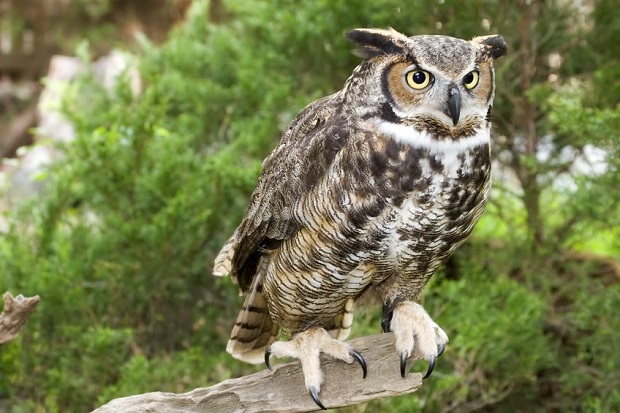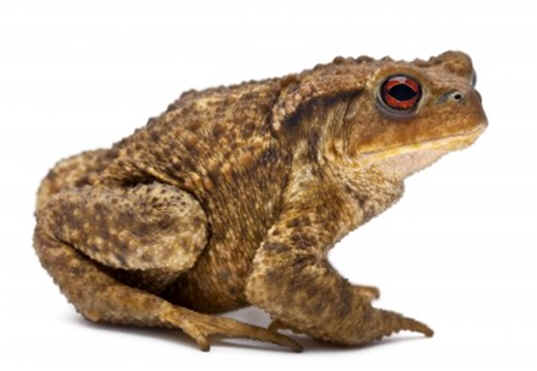
Several salamander species can live in water. Aquatic salamanders are equipped with gills and live solely in the water. Others are semi-aquatic, living on both the land and in water. Most salamander species begin their lives strictly underwater, hatching from underwater eggs to a larval stage with external gills resembling a tadpole that lives strictly underwater as it matures. Through this metamorphosis, some will move to land, while other species remain in the water.
10 Fascinating Salamanders That Live Under Water
Axolotl – The Mexican Walking Fish

The Axolotl (Ambystoma mexicanum), also known as the Mexican walking fish, is a strictly aquatic salamander species. Like a fish, it eats, sleeps, and breeds underwater. It stops maturing at its larval stage, retaining its dorsal fin and feathery, external gills that allow it to breathe underwater.
These interesting salamanders can only be found in Lake Xochimilco near Mexico City. It can grow up to 12 inches and has an average lifespan of 10-15 years.
Olm

The Olm (Proteus anguinus), also known as proteus, is strictly aquatic. It retains the characteristics of its larval stage, including external gills. This salamander species lives solely in underwater caves and has lost its sight and skin pigmentation.
Olms are found in the bedrock in the streams of central and southeastern Europe. It can grow to 12 inches and has an average lifespan of 58 years.
Chinese Giant Salamander

The Chinese giant salamander (Andrias davidianus) is fully aquatic yet has no gills! This salamander has the ability to absorb oxygen from the water through its skin. It boasts the claim to fame of being one of the largest salamanders as well as one of the largest amphibians in the world.
Chinese giant salamanders are indigenous to the Yangtze river basin in China. It can grow up to 5.9 feet. It has an average lifespan of 60 years or more in captivity.
Common Mudpuppy
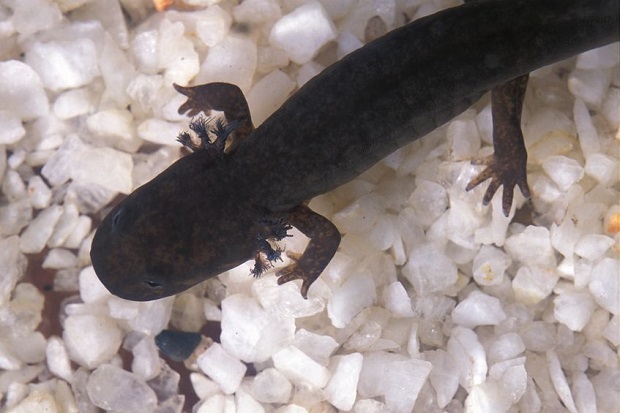
The common mudpuppy (Necturus maculosus) lives entirely in the water in lakes, streams, and ponds. This species has both lungs and gills.
Mudpuppies are indigenous to the eastern part of North America. They can grow up to 13 inches. They have an average lifespan of 20 years.
Lesser Siren

The lesser siren (Siren intermedia), also known as the two-legged eel, dwarf siren, and mud eel, is an aquatic salamander species equipped with gills. This salamander species looks like an eel with two tiny limbs protruding from its head. It has no hind legs.
The lesser siren is indigenous to the eastern United States and northern Mexico. It can grow up to 27 inches.
Greater Siren
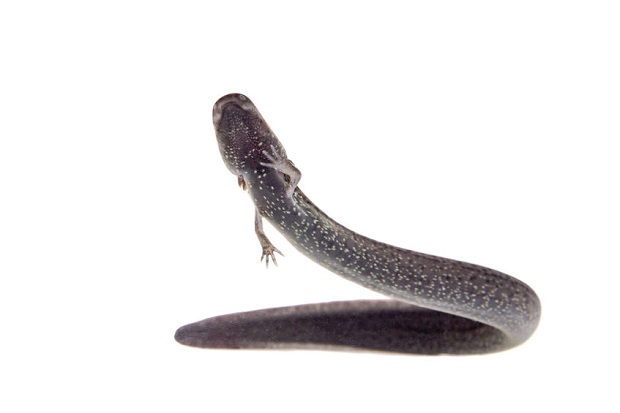
The greater siren (Siren lacertina) is a larger version of the aquatic lesser siren. They can be found in wetlands and can aestivate for years at a time.
The greater siren is indigenous to the coastal plains of the southeastern United States. It can grow up to 38 inches.
Spanish Ribbed Newt

The Spanish ribbed newt (Pleurodeles waltl ) is not strictly an aquatic salamander species. It can walk on land but spends most of its life in the water. The newt goes by several names, including the Iberian ribbed newt, gallipado, and sharp-ribbed newt. As a defense mechanism, this fascinating creature’s ribs puncture through its skin through a set of tubercles running down the sides of its body.
The Spanish ribbed newt can be found throughout the Iberian Peninsula and Morocco. It can grow up to 12 inches.
Amphiuma – The Genus of Eel-like Salamanders
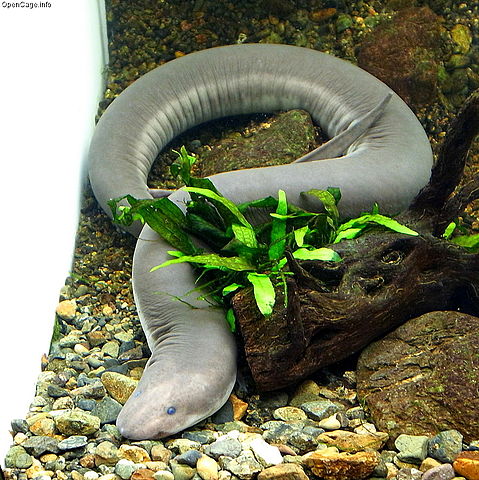
The genus amphiuma has three species that look more like eels than salamanders, the three-toed amphiuma, the two-toed amphiuma, and the one-toed amphiuma. The names are derived from the number of toes on each leg. All three species are nocturnal carnivores. Though primarily water dwellers, they are known to walk on land after heavy rains. They are also known to bite.
Three-toed Amphiuma
The three-toed amphiuma (Amphiuma tridactylum) is indigenous to the Gulf Coast Plain, centered on the lower Mississippi River from Texas to western Alabama, north to southern Illinois, and extreme southwestern Kentucky. It can grow up to 30 inches.
Two-toed Amphiuma
The two-toed amphiuma (Amphiuma means), also called the congo eel, is indigenous to the southeastern United States. It can grow to nearly 4 feet, making it the largest of the genus and also the longest salamander species in the US.
One-toed Amphiuma
The one-toed amphiuma (Amphiuma pholeter) is indigenous to Florida and southern Georgia. The average adult size is 8.4 inches.
Resources
Naish, Darren. Scientific American
“The Amazing World of Salamanders”
https://blogs.scientificamerican.com/tetrapod-zoology/the-amazing-world-of-salamanders/
National Geographic
“Axolotl”
https://www.nationalgeographic.com/animals/amphibians/a/axolotl/
Encyclopedia Britannica
“Olm”
https://www.britannica.com/animal/olm
San Diego Zoo
“Chinese Giant Salamander”
https://animals.sandiegozoo.org/animals/chinese-giant-salamander
Michigan State University Extension
“The Misunderstood Mudpuppy”
https://www.canr.msu.edu/news/the_misunderstood_mudpuppy_bohling15
Saint Louis Zoo
“The Lesser Siren”
https://www.stlzoo.org/animals/abouttheanimals/amphibians/salamandersandnewts/westernlessersiren
Savannah River Ecology Laboratory – University of Georgia
“Greater Siren”
https://srelherp.uga.edu/salamanders/sirlac.htm
Caudata Culture
“Pleurodeles waltl – Spanish Ribbed Newt”
https://www.caudata.org/cc/species/Pleurodeles/P_waltl.shtml
USGS – Non-Indigenous Aquatic Species
“Amphiuma tridactylum – Three-toed Amphiuma”
https://nas.er.usgs.gov/queries/FactSheet.aspx?SpeciesID=2863
Savannah River Ecology Laboratory – University of Georgia
“Two-toed Amphiuma”
https://srelherp.uga.edu/salamanders/ampmea.htm
Savannah River Ecology Laboratory – University of Georgia
“One-toed Amphiuma”
https://srelherp.uga.edu/salamanders/amppho.htm

